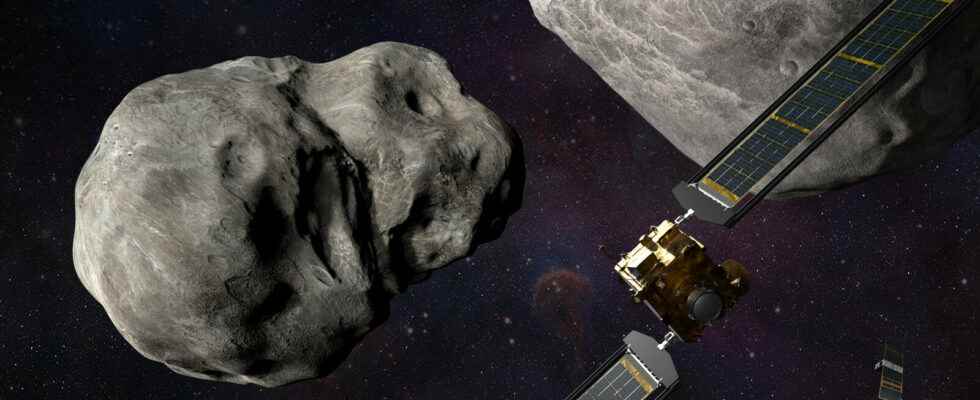Bruce Willis saved Earth from colliding with an asteroid in Armageddon. NASA now wants to do this without the help of the Hollywood warrior. Here you can see the use.
This space agency illustration shows the DART spacecraft just before colliding with the asteroid Didymos. (Credit: NASA/Johns Hopkins APL/Steve Gribben)
- NASA plans to ram an asteroid out of orbit today.
- You can follow the so-called DART mission in the live stream.
- NASA is broadcasting the mission live on YouTube.
Update September 27th: The unmanned spacecraft collided with the asteroid as planned, you can watch the collision again in the following Twitter video:
Original message from September 26th
This NASA mission brings back memories of the movie Armageddon. On September 26, the US space agency will launch the “DART” mission. As part of this, an asteroid is to be rammed and its orbit changed as a result.
The designated target, the Didymos asteroid system, which consists of a larger asteroid called Didymos and a smaller asteroid called Dimorphos orbiting it. Although it does not pose a threat to Earth, the researchers want to test it in case of an emergency.
Live stream on YouTube
You can follow the mission live. NASA is broadcasting the mission on its YouTube channel. It starts today, September 26, from around 11:30 p.m. German time. The collision is not expected until 5:14 a.m. on Tuesday night.
According to the US space agency, in the hours leading up to the impact, the stream will appear mostly black, with a single point of light. This point is the Didymos asteroid system. The closer the impact of the asteroid Dimorphos gets, the larger the point of light will be and the more asteroids will eventually be seen.
This is how the DART mission works
Incidentally, the abbreviation “DART” stands for “Double Asteroid Redirection Test”. NASA uses it to describe not only the mission itself, but also the spacecraft that will fly it. This is an unmanned probe the size of a candy vending machine.
Also interesting…
It will collide with Dimorphos, the smaller of the two asteroids in the system, at speeds in excess of 15,000 miles per hour. The impact will cause the pyramid-sized asteroid to change its orbit. Whether the mission was successful will only become apparent in October, when the researchers have re-determined the orbit of the asteroids.
Don’t miss anything with the NETWORK-Newsletter
Every Friday: The most informative and entertaining summary from the world of technology!
